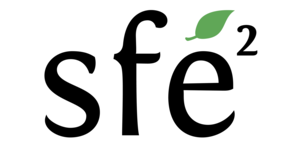Microorganisms, and in particular bacteria, are responsible for the majority of the steps involved in the decomposition of soil organic matter. The dynamics and persistence of organic carbon in soils is thus the result of interactions, within the microbial habitat, of organic matter and micro-organisms. These interactions depend on the diversity of the communities of micro-organisms present, the diversity of the available substrates, the spatial organisation of all these actors as well as the local physico-chemical properties. Whilst we now have a good idea of the high diversity of bacteria present in soils (Delgado-Baquerizo et al., 2018), distribution of bacterial diversity within the porosity, and thus the metabolic capacities in the microbial habitat remain unknown. In particular, if the microbial communities within a habitat are sufficiently diverse, metabolic complementarity between phyla and the establishment of intercellular metabolic networks can be expected (Pande and Kost, 2017). Similarly, functional redundancy (Nunan et al., 2020) would allow for an increased stability of the processes leading to the degradation of organic matter.
The SOILPACMAN project, funded by the ANR and the DFG, aims to better understand how the properties of soil microenvironments affect the persistence or decomposition of organic matter in the soil pore space. One of the research axes of the project is to study, through modelling, the respective roles of microbial diversity, organic substrate diversity, and their respective spatial distribution on organic matter decomposition.
The work will consist in the development of a model initiated in (Nunan et al., 2020), using stochastic geometry approaches (point processes, Boolean model) to study how space modulates interactions within soil microbial communities during resource acquisition. One of the objectives of this study is to produce simple relationships linking density and diversity of microorganisms, and quantity of accessible resources that can be implemented in mechanistic models of organic matter decomposition in soil porosity (e.g. Mbé et al., 2022).
The model on which the project is based is coded in R and proficiency in this language will be appreciated, but skills in any other programming language may suffice. The subject is highly multi-disciplinary and the candidate will have to draw on skills in ecology, programming and possibly mathematics. The thesis will take place on the Pierre and Marie Curie campus of Sorbonne University.
Applications should include a short covering letter and a CV. In your cover letter, you can discuss your research ideas and interests, your personal approach to the project description, and describe how your past experience, academic or otherwise, has prepared you for this position. Please email your application as a single PDF file with the subject line « PhD SoilPACMAN » to xavier.raynaud@sorbonne-universite.fr. Applications will be considered on a rolling basis until the post is filled. If you have any detailed questions about the project, please contact Dr. Xavier Raynaud (xavier.raynaud@sorbonne-universite.fr).
Delgado-Baquerizo, M., Oliverio, A.M., Brewer, T.E., Benavent-González, A., Eldridge, D.J., Bardgett, R.D., Maestre, F.T., Singh, B.K., Fierer, N., 2018. A global atlas of the dominant bacteria found in soil. Science 359, 320–325. https://doi.org/10.1126/science.aap9516
Mbé, B., Monga, O., Pot, V., Otten, W., Hecht, F., Raynaud, X., Nunan, N., Chenu, C., Baveye, P.C., Garnier, P., 2022. Scenario modelling of carbon mineralization in 3D soil architecture at the microscale: Toward an accessibility coefficient of organic matter for bacteria. Eur. J. Soil Sci. 73, e13144. https://doi.org/10.1111/ejss.13144
Nunan, N., Schmidt, H., Raynaud, X., 2020. The ecology of heterogeneity: soil bacterial communities and C dynamics. Philos. Trans. R. Soc. B Biol. Sci. 375, 20190249. https://doi.org/10.1098/rstb.2019.0249
Pande, S., Kost, C., 2017. Bacterial unculturability and the formation of intercellular metabolic networks. Trends Microbiol. 25, 349–361. https://doi.org/10.1016/j.tim.2017.02.015

Commentaires récents